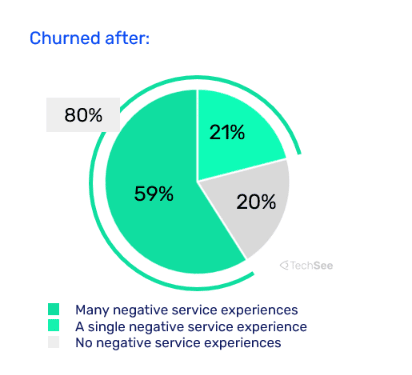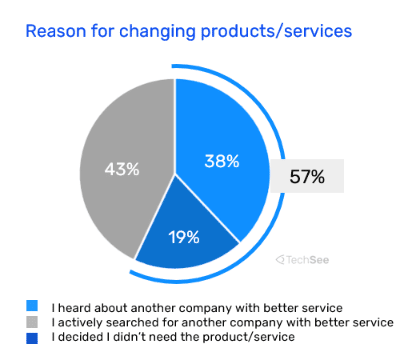Contents
Growth and customer loyalty have historically been product-led. The company with the newest gadgets, with the best features, or the best price were often the market share winners of their industry. Customers who were happy with a company’s product were loyal for years, unwilling to try alternatives. Today, there is a shift in the role customer service quality plays on customer loyalty. Our 2022 State of Customer Loyalty report found that churn resulting from poor customer service is up 10% compared with pre-pandemic numbers. This shift from product-led to experience-led loyalty was accelerated by the pandemic, in part due to the reliance on remote customer service. Early adopters of remote visual assistance technology and computer vision AI during this period found that it was not just an operationally practical solution, but an essential part of a better customer experience. In this post, we explore how the rules of maintaining customer loyalty have changed, and how visual technology closes these gaps.
Reduce Churn – Sensitivity to poor experience
Customers see a purchase as an end-to-end experience. The purchase does not begin or end with the product or service itself. It includes any interaction – from sales to customer support to the actual product experience. Any negative experience along the customer journey chips away from the perceived brand value. If ignored, customer sensitivity to poor experiences can be detrimental to the brand. The stakes have never been higher. The 2022 State of Customer Loyalty and Churn report showed that 1 out of 5 customers will churn after just a single bad experience.

Most customers (59%) will churn only after ongoing unsatisfactory service. This indicates an opportunity for companies to retain customers at risk of churning by improving their service experience. Key areas of the customer journey vulnerable to poor service quality can be supplemented with visual assistance and computer vision AI. Sales teams can use remote visual assistance to assess the customer site before an order is placed to ensure the correct model and size is sold, preventing later frustration. Customer service agents can use visual support to see exactly what the customer sees and provide accurate and efficient visual guidance. Embed visual technology into friction points in the customer journey to provide user-friendly automation. Visual technology addresses key customer pain points such as waiting on hold for too long, feeling frustrated when an agent can’t understand their problem, or waiting for a technician to come on-site to fix the problem. By reducing customer effort and providing a superior experience with vision, brands are effectively and efficiently combating churn.
Increase Loyalty – Customer service as a key differentiator
Customer service is becoming a key reason customers churn to competitors, and what ultimately earns their loyalty. 43% of customers actively searched for an alternative company with better service when they churned. 38% churned passively when they heard about a company with better service quality. Not only is poor service a liability, but quality customer service can be an experience differentiator. Companies providing superior service quality have the opportunity to gain customers and generate brand loyalty.

Major brands worldwide are implementing visual technology to differentiate their service experience. Geico and Achmea offer visual claims for their customers to upload images of the damage in self-service mode for quicker estimates and repairs. Lennar implemented visual remote care to reduce customer wait times for technicians to resolve their issue. ABB provides business clients with remote visual machine maintenance and repair to improve tech accessibility. Verizon offers a visual assistant technician solution for remote troubleshooting. Across industries, visual service and computer vision AI are being used to boost service quality and enrich the customer experience. The impressive results of visual assistance on CSAT and NPS indicate the customer need for experience customization and accessibility of service anywhere, anytime. These increases in customer satisfaction mean greater customer loyalty.
Conclusion
Customers have spoken and the verdict is out. Convenient and effective customer service is no longer a nice to have, but a key requirement to maintain or even generate customer loyalty. Visual technology is a powerful way to fill in the gaps in service delivery and meet customer expectations. By using visual to better understand the customer, provide more efficient service, reduce customer effort and improve results, customers are happier and stay loyal.






